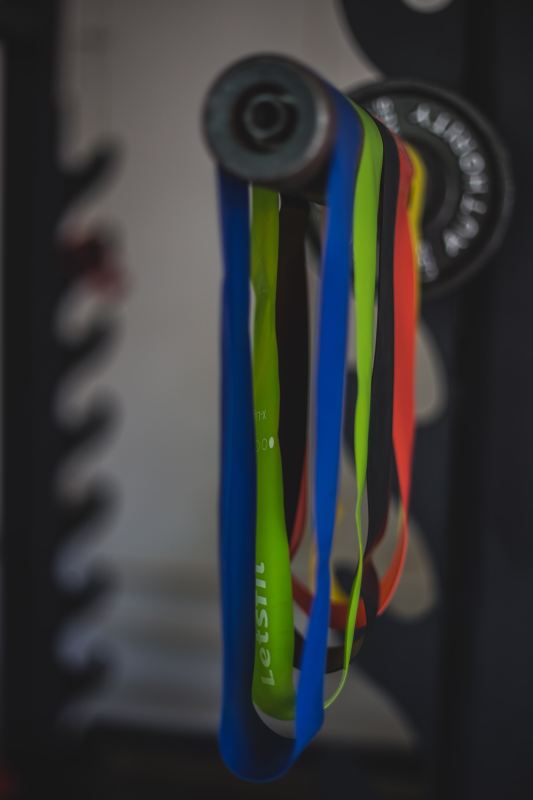
Dead bug exercise: Terrible name, but one of the best core workouts you can do
Dead bug is one of the least appealing names for a workout, especially when you place it next to lunges, squats, dips, planks, and pushups. Even the entomologists who study insects and the select group of people fascinated with bugs probably don’t like to think about a dead bug. Most people cringe or squirm at the thought of a dead cockroach lying on its back with its legs bent up in the air.
The consensus is that dead bug exercise is a terrible name for an excellent core-building, beginner-friendly exercise. Here’s the lowdown on the dead bug exercise and the reasons to add it to your workout plan.

How do you do a dead bug exercise?
To perform the dead bug exercise:
- Lie on your back and point your arms straight up in the air toward the ceiling.
- Lift your legs up to an L-shaped tabletop position so your knees are bent over your hips at a 90-degree angle.
- Lower your right arm back over your head while simultaneously straightening your left leg and bringing it down to the ground.
- Then, bring both your right arm and left leg back up. This counts as one rep. Now, you can repeat the motion with your left arm and right leg.
You’ll want the proper form to fully strengthen your core and get the most out of this exercise. Engage your core and keep your back flat and your head on the floor throughout the exercise. Lifting your head and neck loses the neutral spine.
Dead bug exercise is about strength, balance, and control rather than speed. Try to exhale before you lower your leg and arm, and inhale before you lift them. Work slowly with deep, controlled breaths, and try to hold each position for at least 1 to 3 seconds.

How do you modify the dead bug exercise?
Dead bug is a beginner-friendly exercise, but there are ways to modify it. For example, if you have limitations, you could bring your legs up only as far as you can.
Medicine ball
Some modifications make this interesting exercise a little more challenging. Working with a 5- to 8-pound medicine ball works your core even harder. When your legs and arms are up in the starting position, you hold the medicine ball in place with your left knee and right elbow. Continue to hold the ball in place while extending your opposite arm and leg in the usual motion. Maintaining the tension with your elbow and leg holds the medicine ball up in the air, which is the goal of this modification. You can try a yoga block or stability ball if a medicine ball is a little too heavy.
Weighted
Adding 5 to 10 pounds of weighted plates or dumbbells to this exercise boosts shoulder and core mobility and strength. You perform the same dead bug exercise while holding the weights in your hands and bringing the weights toward the floor. Don’t push too hard or you could injure your shoulder. Go until you feel a good stretch.
Banded (arms)
With banded dead bug, you loop a resistance band around a pole or piece of furniture and lie down on your back so the band is just past your head. The idea is to hold the band with both hands and pull the band until your hands are just above the middle of your chest. You’ll do the usual dead bug motion with your legs while you’re simultaneously pulling the band. This modification is optimal for people having difficulty moving both arms and legs while engaging the core. Try to hold each pose for at least 10 to 15 seconds.
Banded (feet)
You can also use a small looped resistance band around your feet to add more resistance to your lower body.

What are the benefits of dead bug exercise?
Here are some of the many benefits of dead bug exercise:
- Beginner-friendly movement
- Helps you tone, sculpt, and strengthen your core
- Targets all core muscles, including the obliques, rectus abdominis, and transverse abdominis
- Allows you to work out your core, legs, and arms at the same time
- Contributes to better posture, balance, and coordination
- Can be performed on the go without the need for equipment
- Places your spine in a neutral position and allows your arms and legs to move freely
- Increases range of motion for the shoulders and hips
The dead bug works your upper body muscles, including your pectorals and posterior and anterior deltoids, and your lower body muscles, like your quadriceps and hip flexors. Dead bug doesn’t just work your arms and legs; it also works all of your core muscles, from the obliques on the sides of your torso to the deepest core muscle called the transverse abdominis. The exercise also strengthens your pelvic floor — the muscles on the bottom of your abdominal cavity that hold up your internal organs.
People with lower back issues use dead bug to assist in recovery from injury. It’s a slow and controlled way to tune into your breathing, engage your core, and maintain a neutral spine.
While it might have a silly and playful name, dead bug is a beneficial core exercise that’s definitely worth adding to your workout routine.
Editors' Recommendations
- How to do a leg press: Everything you need to know
- Anyone can do Chris Hemsworth’s 15-minute resistance band workout
- How to do skull crushers the right way: The do’s and don’ts you need to know
- 7 exercises that target the deep core (and what that actually means)
- This is the best pull day workout routine for size and strength



